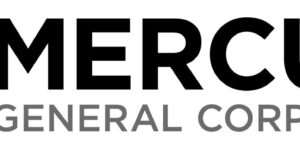The program insurance business market has enjoyed years of growth and appears on track to continue its expansion.
However, while program business is attracting new interest, some participants are cautioning that not all competition is good.
Program business premiums grew by 9.8 percent in 2013, reaching $30.1 billion for the year; that is up from $27.4 billion in 2012. In comparison, the total property/casualty industry grew commercial lines premiums by 4.0 percent in 2013, according to ISO.
About one-in-10 U.S. dollars spent on commercial P/C insurance is distributed through the program market, according to a recent report by the Target Markets Program Administrators Association (TMPAA), “The State of Program Business Study.”
“Once again, this year’s survey results demonstrate the impact that program administrators have on the marketplace – clearly outpacing the other major segments of the property/casualty insurance market,” said David Springer, TMPAA president and president/chief operating officer of program administrator NIP Programs.
By TMPAA’s definition a program is an insurance product targeted to a particular niche market or class, generally representing a group of similar risks placed with one carrier.
The number of programs available in the market is also growing. The most recent survey showed that the number of programs grew by 3.1 percent in 2013.
The number of program administrators held steady, according to the survey. The estimated number of confirmed organizations in the United States that meet the definition of program administrator held at 1,000 in 2014.
Cycle’s Right for Programs
There are various explanations for the growth in program business.
New players are entering because the time is right in the insurance cycle, says Grace Meek, senior vice president, programs for Allied World North America.
According to Meek, carriers that do not traditionally concentrate in program business are driving the growth. “In a soft market [like today] more companies focus on programs because it’s easier to hit top line growth because it’s chunks of premium,” she says. As a result more companies dabble in programs than in a harder market.
“And then when the market gets hard they pull that business back into their direct operation.”
Dabbling is dangerous when it comes to program market business, according to Ken Robinette, president of Bellingham Underwriters Inc., in Bellingham, Wash.
Like the rest of the P/C industry, the program sector is seeing a lot of new capital entering, a development that Robinette worries is leading to some dangerous competition.
“You have a lot of money looking for a place to play – a lot of capital pouring in, which is both a problem and an advantage at the same time,” Robinette said.
With very low interest rates the insurance industry, and program writers in particular, must focus on profitability. “When interest rates are high, general agencies are in heaven because they can focus on production,” Robinette said. However, when interest rates are low, as in today’s market, general agencies are forced to focus on profitability.
In Robinette’s view, this is a challenge as most general agencies tend to focus more on production rather than underwriting profitability. While more capital is leading to more program market opportunities, he says, that’s not always a good thing for every player in programs.
“Products and programs that generally aren’t the best at underwriting in a time when there’s too much money in the market still may find access to carriers and markets that they wouldn’t get if there wasn’t so much money in the flow,” he said. However, “truth be told, the most dangerous competition that I face is from program administrators who don’t understand enough about the business to price it profitably.”
Good program administrators who know what they are doing aren’t the problem. “It’s the people who don’t know what they are doing that are my biggest concern,” Robinette says.
Marc Willner, executive vice president, Ironshore Programs, agrees more carriers are eyeing program business as a way to generate new business – often times it’s business that the insurer wouldn’t typically handle.
“There is certainly more interest from carriers in the marketplace as providers of capacity for programs. They are looking at various ways to supply that capital and get into classes that they want to get into, where the carrier may not have the production capability with agents or wholesalers or the carrier doesn’t have the full underwriting staff to handle the business,” Willner says.
While Willner says he has seen increased interest from carriers, he has also seen a few carriers exiting the program market.
According to the TMPAA 2014 survey, the majority of carriers (87 percent) polled said they plan to increase the amount of program business premium they write in the next three years. They also plan to add programs over that period.
When asked about “best fits” for programs, the program insurers responding to the survey said the top three lines of business they consider for programs are: professional liability, package and liability. On the other hand, they cited worst fits as workers’ compensation, life and health, and personal lines.
Mergers & Acquisitions
The program business sector is also experiencing heightened merger and acquisition activity. According to the TMPAA survey, 14 percent of program administrators polled said their firms were sold in the past three years. This is significantly higher compared to only 7 percent in the 2013 survey, the report revealed.
Smaller firms tend to be more at risk for acquisitions – a greater number of smaller firms or those with revenue below $20 million reported being sold, the survey said.
According to Meek, some of those acquisitions have contributed to the growth trend in program business.
Program administrators that bought retailers or wholesalers consolidated business to boost potential revenues as well as to access new markets, she said. Acquisitions of smaller entities – retail and wholesale – that were not marked in the program market before are now included in program revenue, which added to the growth, Meek said.
In 2013, Swett & Crawford acquired Southern Hospitality Underwriters of Georgia (SHU) in an effort to expand its specialized program business. SHU placed approximately $14.5 million in premium for 2012. That same year, program administrator NSM Insurance Group acquired Executive Liability Managers Insurance Brokers (ELM), a professional liability wholesale insurance brokerage. In January 2014, Edgewood Partners Insurance Center (EPIC) acquired certain assets of program specialist Altus Specialty Group (ASG).
According to the 2014 survey, there is a mismatch between supply and demand in the mergers and acquisitions landscape. While the past two surveys showed buyers outnumbering sellers, responses to the 2014 survey revealed the number of sellers increased, but the number of buyers declined.
The number of program administrators looking to sell increased from 10 percent in the 2013 TMPAA survey to 16 percent in the 2014 survey. The number of administrators looking to acquire dropped from 53 percent in 2013 to 43 percent in 2014. Smaller firms showed a greater propensity to sell, while larger firms showed a greater tendency to acquire other program administrators.
Meek says that as long as the market stays in a soft cycle the program segment will continue to grow and will see further consolidation with some of the large program administrators buying some of the smaller ones. “It’s tough for some small guys to survive,” she said.
Program Challenges
Despite the expanded interest from carriers in the program business sector, finding a market for start-up programs remains a significant challenge, according to the survey.
Start-ups and new programs ranked as the toughest challenges. TMPAA members who participated in the survey said carriers are not too keen on start-ups.
One administrator said carriers are reluctant to write new program business. Another respondent said few carriers are willing to entertain new programs.
Commenting on the future of the program business, one respondent said that the program space “will continue to grow due to the electronics but will need more carriers to step up to new start-up programs.”
Starting a new program can be difficult. Ironshore’s Willner says new programs take more time to develop and bring more risk to both the carrier and program administrator.
The data and marketing needed to run a profitable program aren’t always available for a start-up, he says. Plus, a new program that “doesn’t hit its premium goals within a year or two hurts not only the carrier but also the managing general agency,” he said.
Rollover programs are preferred by most carriers, but sometimes Ironshore will entertain a new program that’s more of a new concept for coverage. “In other words, a program administrator would come to us and say ‘we do this class of business and we noticed that they don’t have this coverage in their standard general liability or professional liability and we’d like to design a program that provides protection,'” Willner said. “That’s interesting for us.”
Technology ranked second in terms of challenges identified by program administrators.
According to one respondent, there is an “overall inability for other program managers to adapt to changes in modern operations.”
Another survey participant said administrators are having difficulty “keeping up with technology and dealing with expense that goes along with it.”
Program administrators have a much better understanding and utilization of data but as a whole the insurance industry is lagging in technology, according to Thomas Gillingham, CEO at EverGuard Insurance Services Inc. based in Seattle, Wash. “There’s a lot more to be done in terms of how we use technology.”
Technology, which was ranked second by administrators when it comes to challenges, was listed as the most important challenge by carriers, according to the survey.
Hiring Personnel
Hiring and retaining qualified personnel also continues to be a major challenge, the survey reported.
Succession planning, or the lack of it, is going to be a major concern for many program administrators in the near future, says Meek. “A lot of these entities don’t have succession plans. The specialty or knowledge lies with someone in their 70s and they haven’t planned beyond that,” Meek said.
The TMPAA survey said that program administrators are boosting their training programs to better support the needs of both new and experienced underwriters, but more needs to be done.
Future of Programs
Overall, the TMPAA report shows that program players remain optimistic about the future of the program space.
John N. Colis, president of Euclid Program Managers in Itasca, Ill., believes that macro-wise, program business will continue to grow for the next five years but at a less robust pace. “Overall it’s positive that so many companies have entered into the space,” he says.
Ironshore’s Willner predicts continued growth in 2015 as well. “I think the program world will continue to grow in both specialty programs and commodity-type program business,” he said. “Programs will be a healthy market and will continue to grow in both soft and hard market times.”
TMPAA Survey
More than 60 percent of the TMPAA’s 285 insurance program administrator members responded to the survey. In addition to the questions about the size, growth and profitability of the program business marketplace, the survey asked new questions about underwriter compensation and social media marketing strategies.
The research was conducted by Advisen. The analysis included a survey of program administrators and carriers that operate in the program industry segment.
Wells is Editor-in-Chief of Insurance Journal Magazine, a Wells Media Group publication, where this article originally appeared.





















 First 2025 Atlantic Hurricane Season Forecasts 7 Named Storms
First 2025 Atlantic Hurricane Season Forecasts 7 Named Storms  Empowering the ‘Semi-Captive’ Agent: A New Playbook for Insurers
Empowering the ‘Semi-Captive’ Agent: A New Playbook for Insurers  Significant But ‘Manageable’ Insurance Losses Expected From LA Fires: S&P
Significant But ‘Manageable’ Insurance Losses Expected From LA Fires: S&P  Will California’s FAIR Plan Have Enough Cash for Its Wildfire Claims?
Will California’s FAIR Plan Have Enough Cash for Its Wildfire Claims? 



